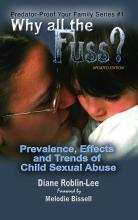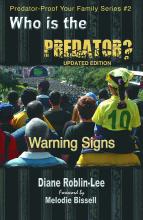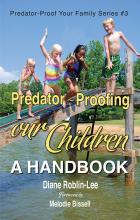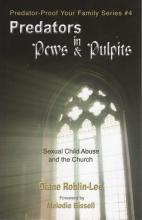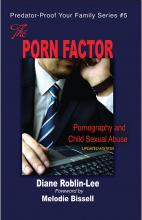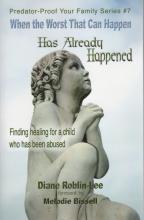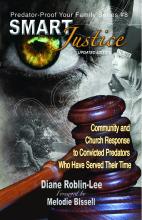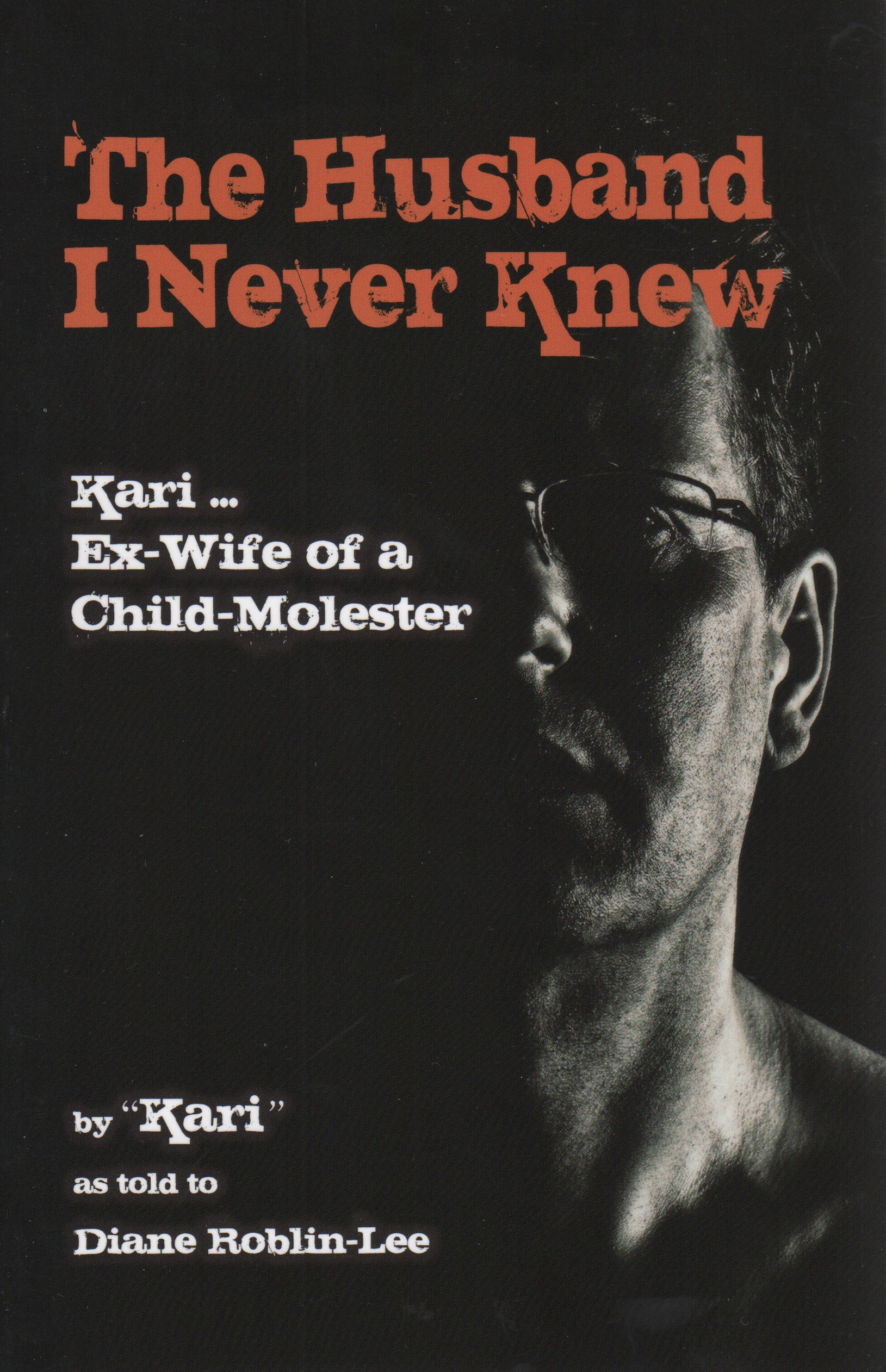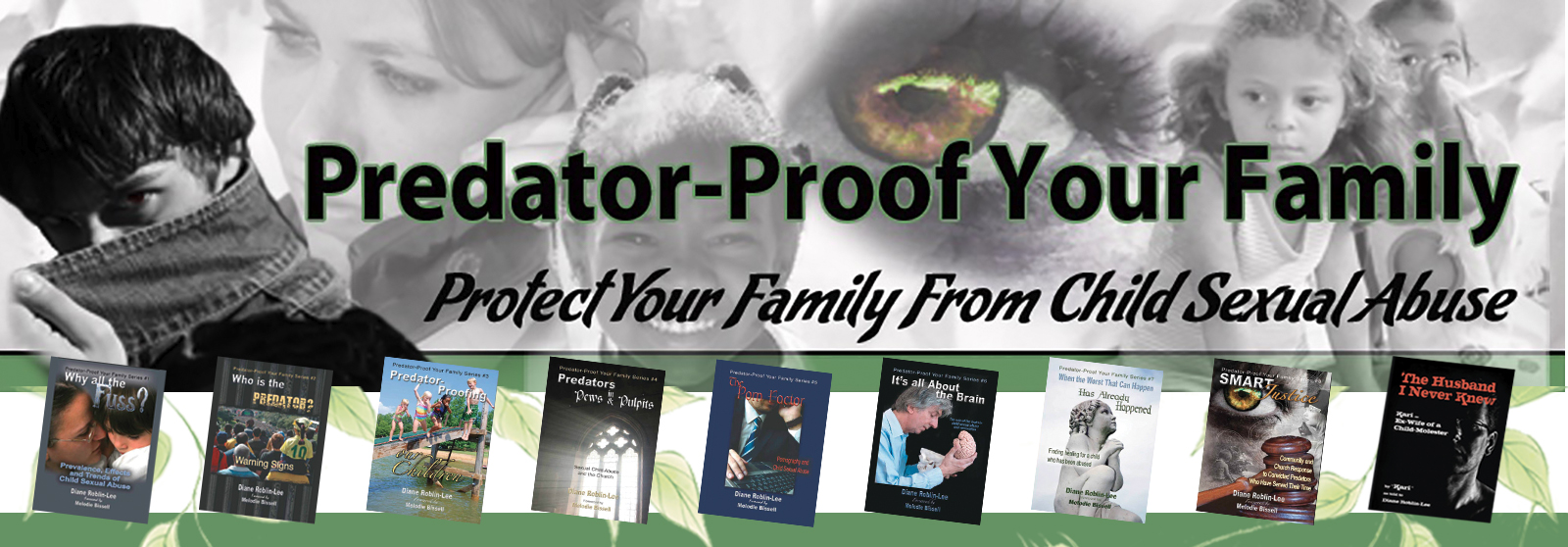
What’s Wrong With This Picture?
All the predictable points are raised about the pros and cons of the payments.
Naturally, the Survivors Network of Those Abused by Priests (SNAP) protested the payments as payoffs and bonuses to priests for molesting children, saying “You don’t give a bonus to a man who rapes children,” and, “If they paid them anything, it should have been for therapy and counseling.”
Of course the archdiocese defended the payments, saying they’re just an incentive to get rid of the priests without getting into a lengthy, bureaucratic process of removal and the payments were to help the men transition to lay life without completely losing access to needs such as health care.
Whoooooah just a minute. Hang on a minute. I feel like somebody has a great big whitewash brush they’re trying to slap over my sensibilities. I have two problems.
First of all, where is there any mention of the victims here? All the focus is on the poor (suspected) predators who need to be looked after as they transition into the world in which the rest of us strive to survive. They need health care. They need counseling. They need therapy. They need. They need.
I can say from experience that when a church pays more attention to the needs of a predator, whether convicted or suspected, than it does to the needs of the victim, the spiritual fallout can be devastating. When a victim sees all the concern and attention going to the person who robbed them of their innocence, childhood and sense of themselves – and sees their own woundedness ignored – something dies inside. Disappointment in the establishment morphs into disappointment and rejection of God. When the rehabilitation of an offender takes precedence over the healing and restoration of a victim, it doubles the deep sense of victimization and injustice.
Anyone who has read my books knows that I place great importance on efforts to rehabilitate offenders, in hopes their restoration will prevent them from offending again. However, the victims have been robbed of so much and when there is no effort to affirm and attempt to recompense them, the wounding just goes deeper and the victim can build deep resentment against those who did not see the bigger picture. The priority must always be with the victim.
My second issue is with the word “suspected” as in “suspected pedophiles.” Why were they suspected? Someone must have complained. How can a suspicion be strong enough to warrant the paying of $20,000. without a conviction? If there were formal charges laid and the “suspected pedophile” was not convicted, that should mean he was exonerated – so why pay the $20,000.?
Let’s get clarity in dealing with predators. If they are “suspected,” they need to be formally investigated, charged (if warranted) and processed in a court of law – where they are found guilty or innocent. No profession should be above the law in being subject to its requirements. Victims always need to know that they matter to the courts, to the community and to the church. Affirmation of what has been done to them is the starting point for healing. Lastly, when convicted predators are released from prison, we need to do all we can to ensure they do not offend again. But that’s lastly.
© Diane Roblin-Lee – May 31/12
…But He Was So Nice!
In 2008, a grandmother, who visited the bank for Christmas presents, particularly appreciated Paul’s friendliness. Life was tough for her, looking after her two grandsons aged four and seven. She had taught the children to be polite and they were nice little boys – but she wasn’t as young as she used to be. Paul seemed to understand her needs. It was nice to have someone who obviously cared. By summer, he was baby sitting the boys whenever she had to do errands or shop. Outings to the CNE and Centre Island became easier because Paul was there to help.
Strangely though, life became more difficult. The happy, outgoing boys weren’t as nice anymore. The seven-year-old was becoming an angry, belligerent child who was no longer doing well in school. He started wetting his bed again and would wake up at night screaming. One day, he kicked Paul in the groin and swore at him. The grandmother was horrified! She had taught him never to speak like that or say those words. When challenged, the boy simply said he “was mad.” Who could have known that the boys had been warned that their family members would be killed if they told about what “the nice man” was doing to them?
Eventually, one of the boys told his parents about the abuse they suffered whenever their grandmother went out. The parents ambushed Paul the next time he went to baby sit and he was charged. Thankfully, he was convicted in February of sexually violating the two boys. He now awaits the results of a psychiatric assessment and could be declared a dangerous offender, a designation which carries an indefinite sentence.
My point to this whole story is understanding what was going on in Paul Gibson’s head when he so ‘generously’ volunteered at the food bank, ‘befriended’ the harried grandmother and her two grandsons and so ‘kindly’ spent his time ‘helping’ her with the boys and ‘making life easier’ for her.
It’s called, “grooming.” Behind Paul’s gentle smile and friendly offers of assistance, were dark thoughts of the perverted things he was going to be able to do to those little boys as soon as he could get them alone. Grooming is a carefully planned strategy for gaining the trust of both the children and the parents or caregivers. It requires the planned establishment of a legitimate connection to the child that will allow for the process of time the “grooming” takes. Teaching, bus driving, sports coaching, camp counseling and volunteering to help with children’s activities all offer opportunities to be alone with children with no adult supervision. In order to protect our kids, we have to understand and be on the lookout for “groomers.”
One characteristic shared by all child molesters is that they are finely tuned manipulators and they recognize their adeptness at manipulating people to achieve their own ends.
In her book, The Manipulative Man, Dorothy McCoy referred to the ICD-10 (the mental health manual used in Europe) in listing the following characteristics to watch for in classifying someone as a manipulator:
- Callous unconcern for the feelings of others
- Gross and persistent attitude of irresponsibility and disregard for social norms, rules and obligations
- Incapacity to maintain enduring relationships, though having no difficulty in establishing them
- Very low tolerance to frustration and a low threshold for discharge of aggression, including violence
- Incapacity to experience guilt or to profit from experience, particularly punishment
- Marked proneness to blame others, or to offer plausible rationalizations, for the behavior that has brought the patient into conflict with society.
© Diane Roblin-Lee – May 10/12
Vigilance or Vigilantism?
In Canada, a national sex offender registry came into force in December 2004, requiring convicted offenders to register within 15 days after being released from prison. Offenders are required to reregister annually, and reregister within two weeks of changing their home address. Only accredited police agencies have access to the information through the national sex offender database, maintained by the Mounties.
The launching of this new, private site gives rise to several questions. Will a public registry ensure the safety of children? What is the downside? Will this really make for a better society?
I believe this site will cause more problems than it will solve, that children will actually be placed at higher risk and it will turn a certain element of society into a pack of vigilantes.
Don’t even think about labeling me as soft on predators. As someone who has had her family and marriage destroyed by two of them, I’m hardly a naive “do-gooder” who has been manipulated into feeling sorry for these people. Quite the contrary. But neither am I so blinded by revenge and hatred that I cannot see clearly and find the course of action which will most surely protect our little ones. Having said that, I absolutely believe that violent offenders and repeat offenders need to be locked up permanently. No question.
But what about the offenders who have been “scared straight” in prison or are so genuinely remorseful that they can be rehabilitated? The myth that offenders usually reoffend is just that – a myth. In my booklet, “Smart Justice,” I underline the dangers of a knee-jerk response to predators who, following release from prison, try to rebuild their lives and re-enter society. I did a ton of research in my writing and was concerned about the findings of some of the researchers and treatment providers who determined that the stress and instability following release can make offenders more likely to relapse. For example, a professor at Lynn University in Florida reported that psycho-social stresses like a lack of social support have been linked to repeat offenses among criminals.
I watched a documentary that followed the lives of several child molesters after their release from prison in the U.S. The vigilantism engendered by the public registry made it impossible for them to support themselves or their families, have relationships or re-start their lives in any way that could contribute to society. Some have formed horrible, scary communes from shacks in the woods where they live in exile from society. Is that what we want in Canada – communes of people united by the red letters on their chests? Depression and loss of hope can become precursers to reoffending, sometimes purposefully, because life on the outside is harder than in prison.
I’m not ready to risk the safety of any child who could become some predator’s ticket back into a place where it’s warm and they serve three squares a day.
We need to be smart – not impulsive. We need wisdom. We can’t afford the luxury of following our natural inclinations in responding to child molesters.
So what am I suggesting? The only thing that makes sense to me is permanent lockup for violent and repeat offenders and permanent electronic monitoring of those who have been released into the community. GPS offender tracking technology monitors offenders day and night, raising the offender’s level of responsibility for his or her own actions, which in turn protects the community.
The logic is that a sex offender is a suspect when any sexual crime is committed. Wearing an electronic bracelet would clear anyone who is under suspicion by providing proof positive of the person’s whereabouts. Conversely, it would also aid in apprehending the perpetrator.
When a crime occurs, the location of the offenders would be matched against a crime incident database to validate or rule out possible involvement by a particular offender. Any released offender who truly commits to a changed life should be happy to wear one – for his or her own security as well as that of anyone else.
Electronic monitoring can be used to ensure that an individual remains in a designated place, does not enter proscribed areas, or does not approach particular people (i.e. complainants, potential victims or co-offenders). A person can be continuously tracked without having their movements so restricted that they can’t work or conduct a productive life. An active real-time offender tracking system can alert either a victim or police if the offender enters certain restricted areas (i.e. a home, workplace or school).
If the rationale against permanent monitoring is based on the concept of freedom following the legally proscribed period of incarceration, how does a public registry fit that rationale? It eliminates freedom permanently.
Frankly, I believe that when a crime has been committed against a child, a perpetrator signs away his or her right to freedom for life – so freedom isn’t my issue. My issue is with using wisdom in how we legislate the restrictions.
Will a public registry really make for a better society? I don’t think so. Judging from my research, it won’t make our kids safer and it will encourage licence for a mindless pack-mentality. Justice needs to be smart. Justice needs to get the job of protection for our kids done right. Justice needs to foster effective vigilance – not vigilantism.
© Diane Roblin-Lee – Apr. 29/12
April is Child Abuse Awareness Month in the U.S.
“My child will never be molested. Our friends and family are all nice people who would never do such a thing.”
Really. I used to think that, too. Sadly, we’re no longer living in a Beaver Cleaver world.
While “Child Abuse Awareness” month is October in Canada, it’s April in the U.S. The hope is that focusing on awareness for one month will lead people to be more aware throughout every day of the year.
The following Canadian statistics, while impossible to rely upon because of lack of reporting and false reporting, are the most recent and best reflection we have of the overall prevalence of the sexual abuse of children in Canada.
* 1 in 3 girls and 1 in 6 boys experience an unwanted sexual act.
Source: Child Sexual Abuse (The Canadian Badgley Royal Commission, Report on Sexual Offenses Against Children and Youths), 1984. (pg. 175)
* 4 out of 5 incidents of sexual abuse will occur before the age of 18.
Source: Child Sexual Abuse (The Canadian Badgley Royal Commission, Report on Sexual Offenses Against Children and Youths), 1984. (pg. 175).
* 95 % of child sexual abuse victims know their perpetrator.
Source: Child Sexual Abuse (The Canadian Badgley Royal Commission, Report on Sexual Offenses Against Children and Youths), 1984. (pg. 215-218).
* Children and youth under 18 years of age are at greatest risk of being sexually assaulted by someone they know.
Source: Family Violence in Canada: A Statistical Profile 2007. Canadian Centre for Justice Statistics. Catalogue No. 85-224-XIE, ISSN 1480-7165. Ottawa, Ontario, Canada. 2007. (pg 6, 21).
* While children and youth under the age of 18 represent only one-fifth of the population, (21%) they were victims in 61% of all sexual offenses reported to police in 2002. (A total of 8,800 sexual assaults against children and youth were reported to police, 2,863 of which were sexual assaults against children and youth by family members.)
Source: Canadian Centre for Justice Statistics – Statistics Canada Catalogue No. 85-002-XIE, Vol. 23. no. 6. Released July 2003. (pg. 7, 34)
* In 2005, the rate of sexual assault against children and youth was over five times higher than for adults (206 children and youth victims compared to 39 adult victims for every 100,000 people.)
Source: Family Violence in Canada: A Statistical Profile 2007. Canadian Centre for Justice Statistics. Catalogue No. 85-224-XIE, ISSN 1480 -7165. Ottawa, Ontario, Canada. 2007. (pg. 20)
* In 2005, girls under 18 years experienced rates of sexual assault that were almost four times higher than their male counterparts. (For every 100, 000 young females there were 320 victims of sexual assault, compared to a rate of 86 male victims for every 100, 000 young males.)
Source: Family Violence in Canada: A Statistical Profile 2007. Canadian Centre for Justice Statistics. Catalogue No. 85-224-XIE, ISSN 1480-7165. Ottawa, Ontario, Canada. 2007. (pg. 21).
* Sexual assault against children by family members was more then three times higher for female victims than for male victims (108 compared with 32 incidents per 100, 000 population). (Rates of sexual assault are higher for female victims than for male victims regardless of the relationship to the accused.)
Source: Family Violence in Canada: A Statistical Profile 2007. Canadian Centre for Justice Statistics. Catalogue No. 85-224-XIE, ISSN 1480-7165. Ottawa, Ontario, Canada. 2007. (pg. 22).
* 54% of girls under 21 have experienced sexual abuse; (22% of these female victims reported two or more sexual offenses.)
* 31% of boys under 21 have experienced sexual abuse; (7% of these male victims reported two or more sexual offenses.)
Source: Child Sexual Abuse (The Canadian Badgley Royal Commission, Report on Sexual Offenses Against Children and Youths), 1984. (pg 180).
* 60% of all reported sexual assaults are against children.
Source: Canadian Centre for Justice Statistics. (2001). Family violence in Canada: A statistical profile 2001. Catalogue no. 85-224-XIE. Ottawa: Government of Canada (pg. 13)
* 30-40% of sexual assault victims are abused by a family member.
Non-parental relatives – 35%
Friends and Peers – 15%
Stepfathers – 13%
Biological Fathers – 9%
Other Acquaintances – 9%
Boyfriend/Girlfriend of Biological Parent – 5%
Biological Mother – 5%
Source: Canadian Incidence Study (CIS) of Reported Child Abuse and Neglect – 2003: Major Findings Minister of Public Works and Government Services Canada. 2005. (pg.52)
* Very few cases (2%) of substantiated sexual abuse involve a stranger.
Source: Canadian Incidence Study (CIS) of Reported Child Abuse and Neglect – 2003: Major Findings Minister of Public Works and Government Services Canada. 2005. (pg.52)
* Child and youth victims who were sexually assaulted by family members were on average 9 years old compared to 12 years old for victims of non-family members.
Source: Canadian Centre for Justice Statistics. (2002). Family violence in Canada: A statistical profile 2002. Catalogue no. 85-224-XIE. Ottawa: Government of Canada (pg. 35).
* 64% of sexual offenses reported to police took place in a residence
26% took place in public and open areas, and
11% took place in commercial places.Source: Canadian Centre for Justice Statistics – Statistics Canada Catalogue No. 85-002-XIE, Vol. 23. no. 6. Released July 2003 (pg. 9)
* Boys 4-7 years of age were 3 times more often the victims of sexual abuse than boys of other ages.
* Girls aged 4-7 and 12-17 were twice as likely to be victims of sexual abuse as girls aged 0-3 and 8-11.
Source: The Juristat presents Child Maltreatment in Canada – Canadian Incidence Study of Reported Child Abuse and Neglect. Authors: Nico Trocmé and David Wolfe. Ottawa, Ontario: Minister of Public Works and Government Services Canada, 2001. (pg. 24)
The preceding information was assembled with thanks by Little Warriors, a national charitable organization, based in Canada, focusing on the education and prevention of child sexual abuse. Little Warriors also provides information about the prevalence and frequency of child sexual abuse and information about healing and support resources.
Child Molester or Pedophile?
It can be helpful to know that child molesters are not necessarily pedophiles and pedophiles are not necessarily child molesters. Pedophilia is a psychological disorder defined by a distinct sexual preference for pre-pubescent children. The Diagnostic and Statistical Manual of Mental Disorders (DSM 111-R), published by the American Psychological Association, gives the following definition of pedophilia:
“Recurrent, intense, sexual urges and sexual arousing fantasies of at least six months duration involving sexual activity with a pre-pubescent child.”
Thus, an individual can be a pedophile without actually engaging in a sexual act. Simply having fantasies about sexual activity with a child over a period of at least six months will qualify. Many pedophiles never engage in actual criminal activity. They just stay at home and think about it. They often have large collections of child pornography or child erotica. Staying close to children is high on their list of priorities. The most common type of pedophile is the immature individual who has never been very successful maintaining peer relationships. Those who lack social contact often spiral down deeper and deeper into a fantasy world.
Pedophiles who actually engage in child molestation become “child molesters.” They often use their collections of erotica and pornography to show to their victims as part of the grooming process of seduction. They think that when their victims see the photographs, their inhibitions will be lowered and they’ll be more inclined to accept sexual activity as something people do normally. Some use photographs and videos they have made of their victims to blackmail them into further sexual activity.
Child molesters, on the other hand, by definition engage in sexual acts with children, but they will generally go after older victims as well as children. Ninety-five percent of them are male. Only 10 percent are strangers to their victims. Fifty to 60 percent are family members. According to a Public Health Agency of Canada fact sheet, 25 percent of molesters are teenagers. The rule of thumb used by professionals is that child sexual abuse occurs when a person touches a child for sexual gratification and is four years older than the child. (Curious playmates of the same age are protected by the age issue.)
Because family members are often hidden from the criminal justice system, it’s difficult for researchers to get a handle on the true extent of the problem. They have been more successful in characterizing family friends and trusted adults outside of the family. These people usually don’t use violence on their victims. They “groom” them, or set them up for the molestation by gradually establishing bonds with the child. By the time the first touch happens, the child has been so conditioned that he or she hardly knows what’s happening.
Molesters victimize children for other motives as well as sexual gratification. Sometimes it’s just part of the mistreatment they direct toward people in general. Usually, they have low self-esteem and view children as less powerful objects on which to vent their anger or sexual frustrations. The main criteria for choosing a victim is availability. It could be anyone, anywhere, who happens to be in the wrong place at the wrong time. They can be strangers who forcefully attack children they don’t know or individuals or family known to the child who use the situation to their own advantage with no concern for the victim.
Those child molesters who prefer sex with children can have an astounding number of victims over a lifetime, if not caught. They choose particular victims and groom them for abuse through developing a relationship of trust, buying them gifts and honing in on their emotional weaknesses. According to U.S. Department of Justice statistics, in more than 90 percent of cases of child rape, the offender was well-known to the children or their parents. These are pedophiles who have carried their fantasies into reality. Some are brutal and physically cruel, while others are more gentle in their approaches. They manipulate relationships to the point of expressing their perversions.
©Diane Roblin-Lee, April, 2012
So What’s The Big Deal About Watching a Little Child Porn?
Get this. The mother of a 26-year-old man, caught with more than 1,200 images of child pornography on his computer (some of which he traded with others) is trying to get his 14-year sentence shortened. According to her, the fact that he has spina bifida and “could never be a threat to anyone, including a child, “should qualify him for early release.
Okay. Don’t get me started here. I need to wipe the froth from my mouth on this one.
What is this mother thinking and where was she when she had the opportunity to nurture fiber and integrity into the heart of her child? What part of not hurting the children featured in the images is she not getting? Does she not understand that when her son (who is arguably more diseased in his mind than in his body) watches child porn, he is participating in the abuse of that child? If there were no market for the product, there would be no product. The fact that this young man’s hands cannot physically touch the child through the computer screen does not prevent his eyes and brain from doing the job of molestation. People who watch child pornography are child molesters. They just molest with different parts of their bodies than do molesters who are in the actual presence of a child.
The problem is that child molesters don’t just fall out of the sky and appear in our lives; they are raised, often by nice people who would be horrified if they knew what their kids were into. While someone who becomes a child molester is responsible for his or her choices, it’s incumbent on every parent to be vigilant with what their kids are reading and finding on the internet. It’s not nice visiting your loved one in jail, wearing an orange jump-suit.
In the process of doing my research, it appeared that almost every case of child molestation was rooted in some form of pornography. It encourages an appetite for increasingly graphic images that has no bounds.
Michael Briére was a nice computer worker who never had any involvement with the police, until little Holly Jones walked by his house one day. Little did anyone know that he had been watching child pornography and fantasizing about molesting a real child. When he walked out his door that day, she was “just there” and the rest is tragedy.
Last month, the police arrested 60 men (including three teens) in Ontario and charged them with hundreds of child pornography offenses. These people came from all ages and walks of life – professionals, blue-collar workers – even a day-care worker. Many of them are probably asking, “Hey – what’s the big deal about watching a little child porn?” Some no doubt claim innocence on the grounds that they “didn’t touch any children.”
The subjects of the pornography, 22 little children, have all thankfully been rescued, but their childhoods have been stolen and their lives will never be the same. Their abilities to trust and have normal relationships will be affected for life.
Child pornography is not constructed from bricks and mortar, steel, plastic or fabric. Child pornography uses real children as its raw material – human children with needs, feelings, futures and dependence on adults to keep them safe. According to Karyn Kennedy, executive director at the Toronto-based Boost Child Abuse Prevention and Intervention, “One difficult aspect for victims is that many of the images will be irretrievable now that they’ve been shared online. I’ve heard victims that are 40, 50 years old talking about having to come to terms with knowing that somewhere somebody is looking at a picture of them.”
According to Det.-Sgt. Frank Goldschmidt of the Ontario Provincial Police, “In any of the Canadian crime trends this is probably one of the only crimes that is still on a fairly substantial increase.”
Thank God for the people in the trenches like Insp. Scott Naylor with the OPP’s child sexual exploitation unit who are out there doing all they can to protect our kids. “We’re constantly building software and changing software and manipulating software, because the people who are trading this are constantly moving from one method of training to another.”
They, and every parent with a child who has been abused, understand why watching “a little child porn” is a huge deal.
Two Years for a Lifetime
Two years for Graham James.
A lifetime for his victims.
Yesterday’s sentence for James’ abuse of Theo Fleury and Todd Holt left everyone shaking their heads in disbelief. How could any judge, with any comprehension of the magnitude of the effects of abuse on a victim and his or her family, determine that a two-year sentence (of which James will probably serve only 16 months) in any way brings justice to the situation.
If Graham James were a first-time offender, one might think that the judge might have had reason to give some credence to his words of remorse and repentance. But Graham James is no first-time offender. A previous conviction (for the abuse of Sheldon Kennedy and another victim) landed him in prison, serving 20 months for a three-and-a-half year sentence. What’s his next sentence going to get him? Six months? Probation and a bit of community service with kids?
One of the most dominant characteristics of the character of an abuser is the ability to manipulate people and situations. Yesterday’s judgment was a reflection of James’ artful power of persuasion with the judge.
There is evidence that prison does its job with some first offenders. There are cases where predators have turned themselves around and gone on to live productive lives. However, a two-time offender needs to be put away where he can no longer threaten the safety of young people. If prison hasn’t done its job the first time, it’s unlikely that it will turn an offender around the second, third or fourth time. We have to keep our kids safe.
Hopefully, the just-passed omnibus crime bill, C-10, will make people who fantasize about molesting vulnerable kids think twice before daring to indulge their perversions.
Thank God for the architects and labourers of Bill C-10 and the officers in the trenches who strive, day after day, to protect and rescue victims of abuse. Thank God for the clear-headed politicians who made their voices count for the children of Canada.
Predators Live Among Us – Book Launch
Spotting Potential Child Molesters
It’s pretty hard to protect our kids if we don’t know who the potential molesters might be. The problem is that predators wear masks made to look like trustworthy, safe people.
In the course of researching her book, Identifying Child Molesters, Dr. Carla van Dam interviewed over 300 molesters who exhibited similar types of behaviors in social situations. These similar behaviors provide us with a general pattern to watch for. If an individual exhibits enough of these behaviors to arouse concern, he needs to be considered too risky to allow unsupervised around our children.
Any suggested warning signs need to be viewed within the context of an individual’s life. For instance, if someone enjoys playing with children in the company of other adults, that’s normal. If someone is a particularly helpful person but doesn’t seek out the company of children, that’s a wonderful thing. However, if combinations of the warning signs are evident, there’s cause for concern and children need to be carefully watched around these people.
Predator-Proof Your Family – Series
Predator-Proof Your Family is a series of nine, 50-page booklets on issues surrounding child sexual-abuse.

